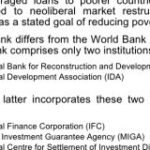Global Nutrition Report 2020 : India may miss nutrition targets

Malnutrition still remains one of India’s biggest challenges, according to the 2020 Global Nutrition Report released worldwide May 12. The annual report, which captures the burden of malnutrition at the global, regional, sub-regional and country levels, is billed as the world’s leading independent assessment of the state of global nutrition.
In 2012, the World Health Assembly identified six nutrition targets for maternal, infant and young child nutrition to be met by 2025. These require governments to reduce stunting by 40% in children under 5 and prevalence of anaemia by 50% among women in the age group of 19-49 years, ensure 30% reduction in low-birth weight and no increase in childhood overweight, increase the rate of exclusive breastfeeding in the first six months up to at least 50% and reduce and maintain childhood wasting to less than 5%.
In a section on India which maps progress against global targets for 10 specific parameters set for 2019, three had no data, one showed “some progress”, while six were marked “no progress or worsening.”However, the under-five mortality (per 1000 births) rate showed a clear decline from 43.6 per cent in 2015 to 36.6 per cent in 2018.Other statistics for India (2016 figures) show that it has 0.76 physicians, 2.09 nurses and midwifes and 0.58 community health workers per 1000 people.
- India is among 88 countries that are likely to miss global nutrition targets by 2025, all four nutritional indicators for which there is data available, i.e. stunting among under-5 children, anaemia among women of reproductive age, childhood overweight and exclusive breastfeeding.The report also identified the country as one with the highest rates of domestic inequalities in malnutrition.
- Between 2000 and 2016, rates of underweight have decreased from 66.0% to 58.1% for boys and 54.2% to 50.1% in girls. However, this is still high compared to the average of 35.6% for boys and 31.8% for girls in Asia.
- In addition, 37.9% of children under 5 years are stunted and 20.8% are wasted, compared to the Asia average of 22.7% and 9.4% respectively.
- One in two women of reproductive age is anaemic, while at the same time the rate of overweight and obesity continues to rise, affecting almost a fifth of the adults, at 21.6% of women and 17.8% of men.
- The report emphasises on the link between malnutrition and different forms of inequity, such as those based on geographic location, age, gender, ethnicity, education and wealth malnutrition in all its forms.
- India is identified as among the three worst countries, along with Nigeria and Indonesia, for steep within-country disparities on stunting, where the levels varied four-fold across communities.
- Stunting level in Uttar Pradesh is over 40% and their rate among individuals in the lowest income group is more than double those in the highest income group at 22.0% and 50.7%, respectively.
- Stunting prevalence is 10.1% higher in rural areas compared to urban areas. The same applies for overweight and obesity, where there are nearly double as many obese adult females than there are males (5.1% compared to 2.7%).
LEARNING WITH TIMES: BASICS
For several decades India was dealing with only one form of malnutrition– undernutrition. In the last decade, now faces the double burden which includes both over- and undernutrition,
What is malnutrition?
Malnutrition is the condition that develops when the body does not get the right amount of the vitamins, minerals, and other nutrients it needs to maintain healthy tissues and organ function. The term malnutrition covers 2 broad groups of conditions.
One is ‘undernutrition’—which includes stunting (low height for age;It is is associated with an underdeveloped brain, poor learning capacity, and increased nutrition-related diseases.), wasting (low weight for height;It is associated with decreased fat mass. Also known as wasting syndrome, it causes muscle and fat tissue to waste away.), underweight (low weight for age) and micronutrient deficiencies or insufficiencies (a lack of important vitamins and minerals).
The other is overweight, obesity and diet-related noncommunicable diseases (such as heart disease, stroke, diabetes and cancer).
Children who are already undernourished can suffer from protein-energy malnutrition (PEM).
Two types of PEM are— Kwashiorkor and Marasmus.






0 Comments